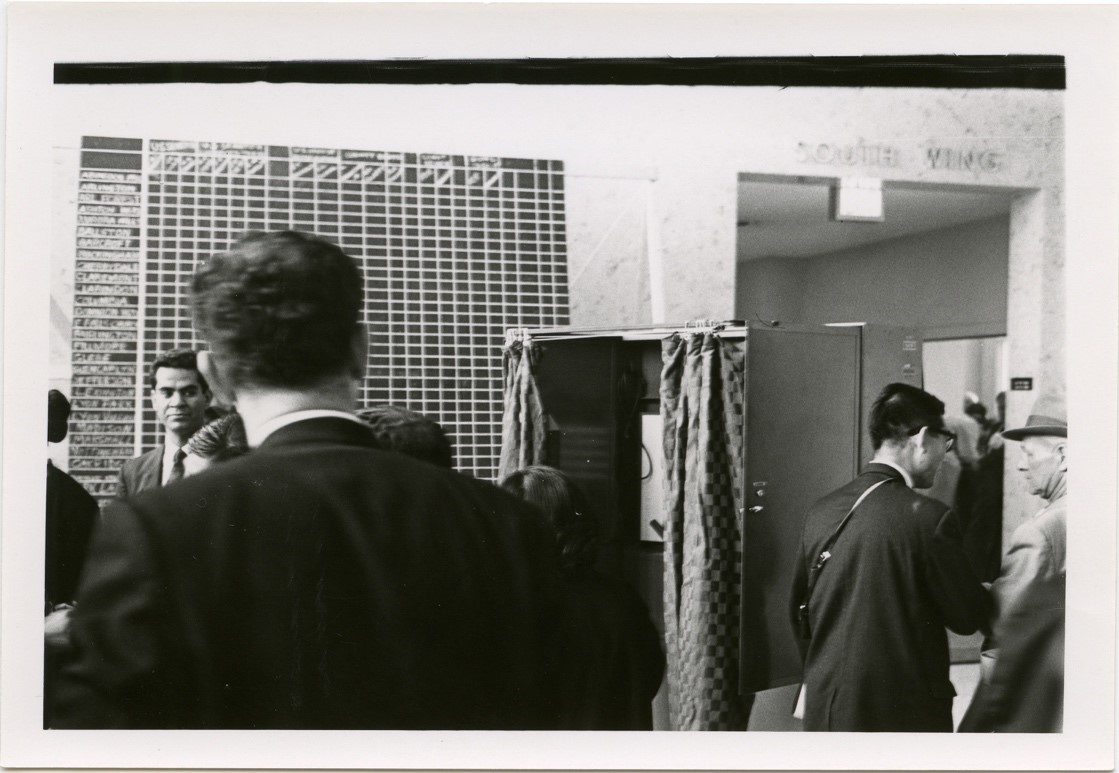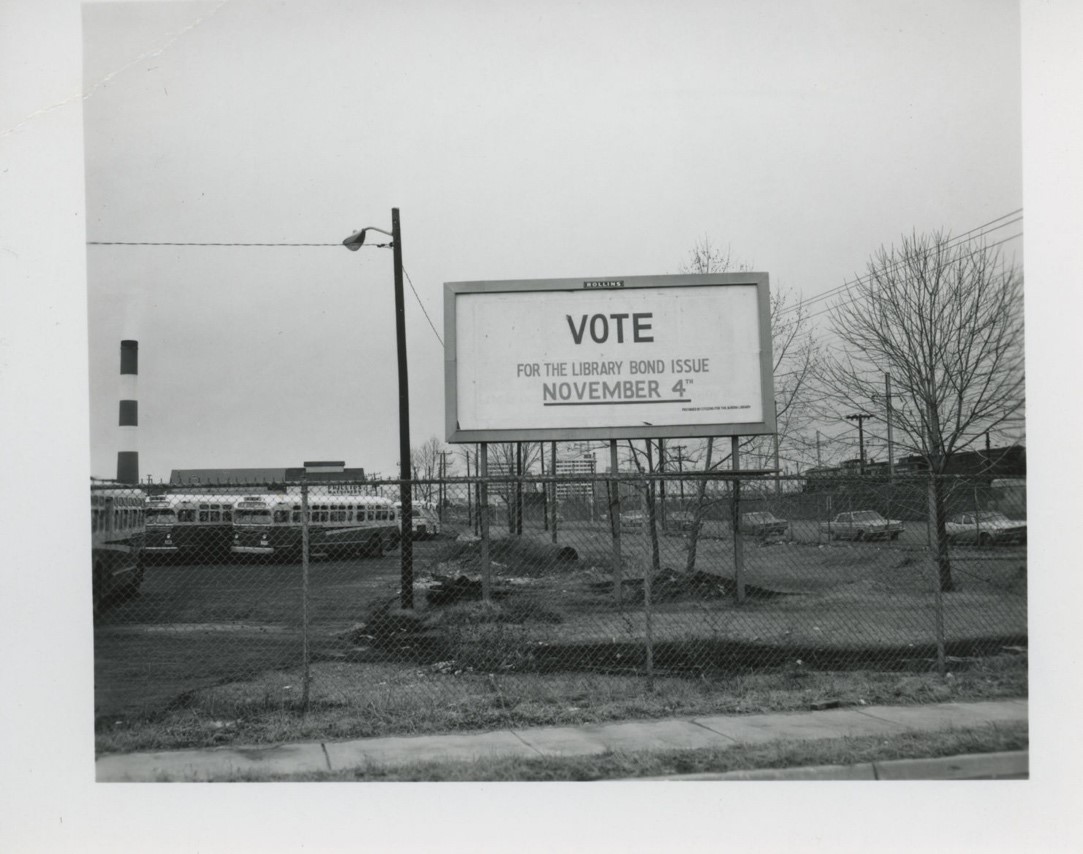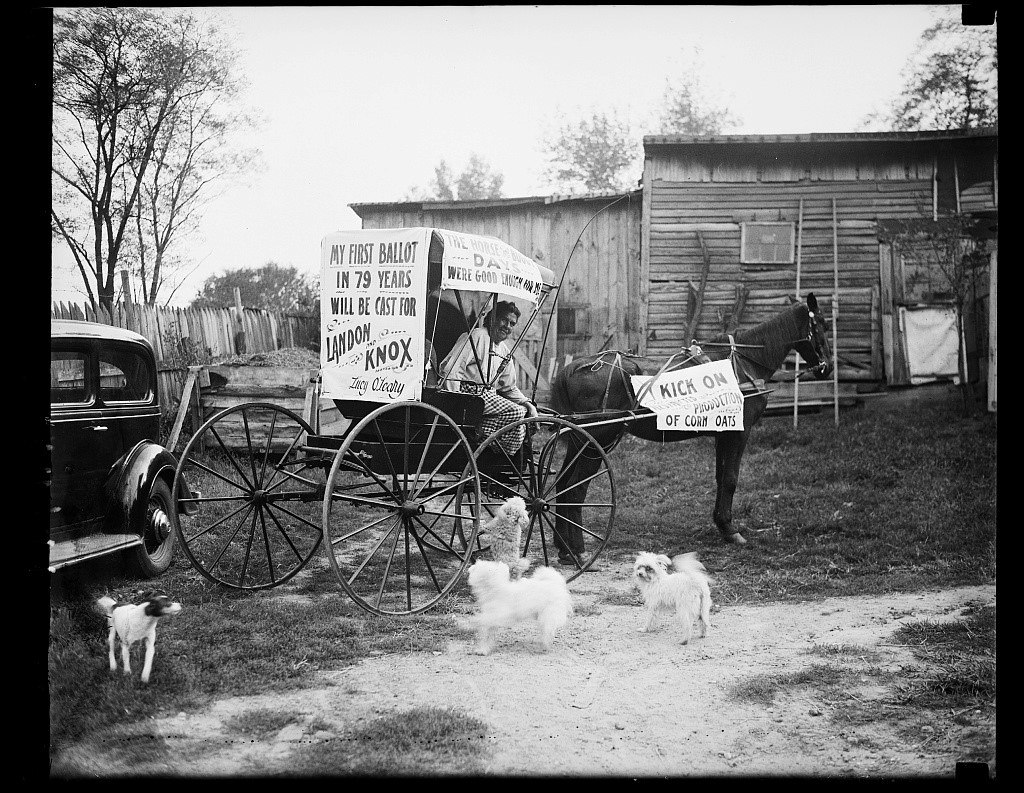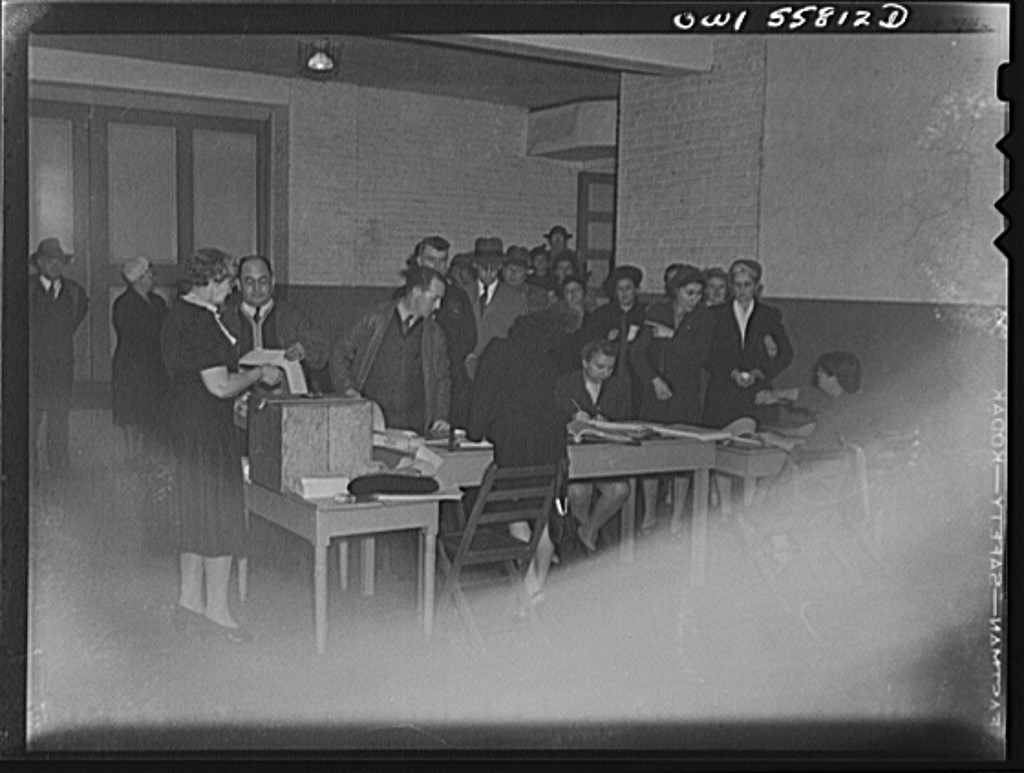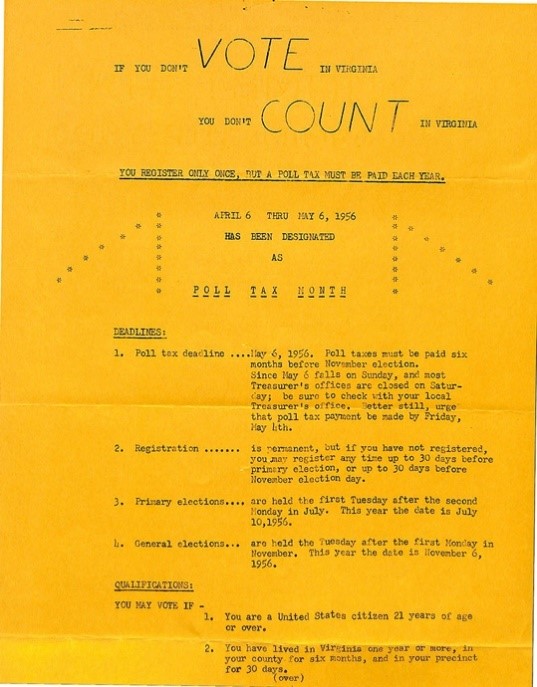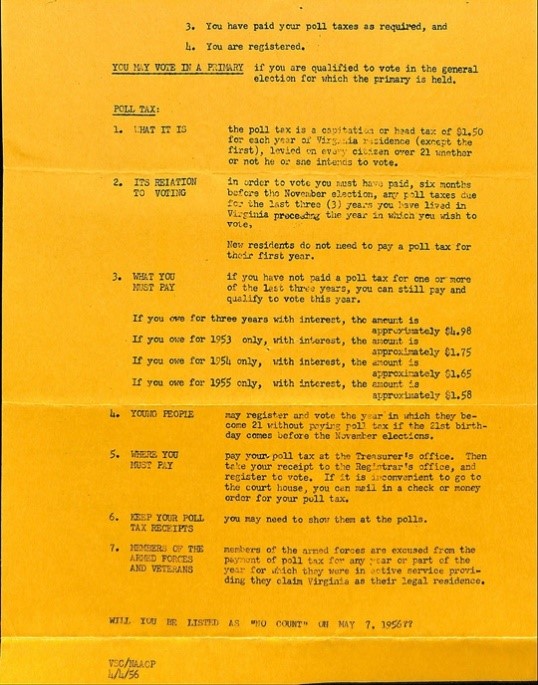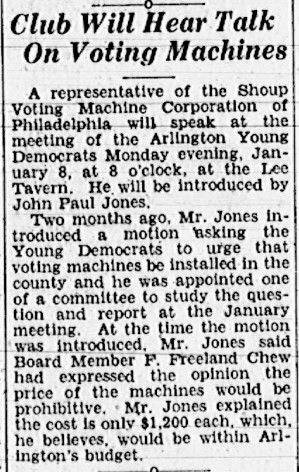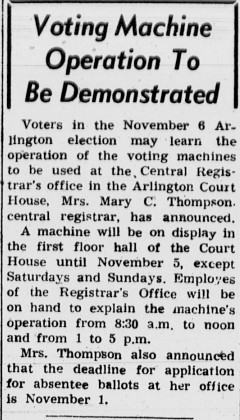November 3 is fast approaching and voting this year has taken an unprecedented turn in the wake of the pandemic, with thousands of Arlingtonians voting early or sending in absentee ballots. The voting process in Arlington and beyond has historically been anything but static – here’s a look at how the voting process has changed over the years.
“People standing around a voting booth,” Arlington County, 1968. PG 214
Sign that says “Vote for the Library Bond, November 4.” Arlington County, 1959. RG 29
Arlington’s First Elections
According to historian C.B. Rose, no one living in what is now Arlington would have been able to vote until these early settlements were incorporated around 1645. Voting likely increased when the land of present-day Arlington was established as Fairfax County and received its own Court House in the town of Alexandria in 1752. At this point in time, all voting had to take place at a Court House, which limited eligible voters who lived far away from these buildings.
The first American elections were conducted by voice vote, or with paper ballots also known as “party tickets.” Unlike the “Australian” or “blanket ballots” that were used in the latter half of the 19th century, these early ballots only carried the name of candidates from a single party. These ballots would then be counted by local party and election officials.
In 1869, a change to the Constitution meant that “secret” ballots were now required and required voters to register prior to elections. A registrar was assigned for 1,000 voters along with an accompanying polling place – an early version of the precinct system.
The Struggle for Women’s Suffrage
“Votes for first time at 79. Arlington, VA, Oct. 15. This is Mrs. O'Leary (not the Mrs. O'Leary who kissed the cow who kicked over the lantern to start the Chicago fire) but Mrs. Lucy O'Leary of this town who will cast her first vote on November 3 at age 79, for Gov. Landon. She now lives on small government pension with the aid of a small garden.” Arlington County, October 15, 1936. Image courtesy of the Library of Congress.
In these early elections, only a fraction of the population was permitted to vote, initially granting the right solely to propertied white men. Because of these limitations, throughout the 19th and 20th centuries, women’s suffrage was a major reform issue nationwide.
Gertrude Crocker was among those on the front lines fighting for women’s right to vote, and would later become a prominent Arlington citizen, owning and operating the Little Tea House. Crocker was among the “Silent Sentinels,” who, on January 10, 1917, participated in the first picket protest outside of the White House.
The 19th Amendment was adopted on August 18, 1920, after decades of advocacy. But after the milestone of women’s suffrage came another portion of the journey for equal voting rights for all. Though women had achieved the right to vote, large portions of the country’s non-white population were still disenfranchised.
Read our series on important figures and events leading up to the passage of the 19th Amendment.
“Citizens at the Wilson High School waiting to vote in the national presidential election. The election started at 7:45 a.m., and a continuous stream of people, mostly men, came in. The women came later in the day.” Arlington County, November 7, 1944. Image courtesy of the Library of Congress.
Fighting Discrimination and Voter Suppression
Though the legal milestones of the 15th and 19th were achieved, in practice, African American voters faced innumerable barriers to voting – from Jim Crow laws, voter suppression tactics, and overt violence.
Shortly after the passage of the 15th amendment, Virginia instituted a poll tax to restrict African American men from voting in 1876. This law was repealed in 1882, but in 1901 the state’s General Assembly called for a new constitution granted suffrage solely to white men.
A new constitution passed in 1902 and required voters to pay a tax of $1.50 six months prior to an election for each of the three years preceding an election. This disenfranchised approximately 90% of the state’s African American voting population and nearly 50% of the white men who had previously been registered to vote in Virginia. The 1902 constitution also created an administrative structure that was difficult for any average citizen to navigate. Virginia maintained poll taxes until 1966.
Local activists and groups such as the Arlington chapter of the NAACP worked tirelessly to combat voter suppression, instituting outreach campaigns and legal challenges to the poll tax. In a suit from Arlingtonian Portia Haskins against the Virginia Board of Elections and the Arlington County general registrar, the court ruled in her favor in 1966, determining that “[t]he provisions of Virginia’s dual voter registration…which treat persons who are registered only for federal elections differently from persons registered for all elections violate the equal protection laws of the 14th Amendment.”
Poll Tax Month: a 1956 Virginia Poll Tax Flyer created by the NAACP, explaining what the poll tax was and how it related to being able to vote in both local and federal elections. View item information in Project DAPS.
The Modern Age of Voting
The last century has also seen technological developments in how we place our votes. From paper ballots, voting machines were introduced in the mid-20th century to modernize the voting process. Today, further developments, such as digital scanners introduced in 2015, continue to streamline how we vote and how our votes are counted.
Arlington County has also seen incredible growth from its humble electoral beginnings. The County now has 54 voter precincts and accompanying polling places. Almost every aspect of voting has changed in the centuries since the County’s beginnings: from who had the right to vote, to how voting was carried out. Be sure to cast your ballot on November 3!
An early opportunity for voter to try out a voting machine. From the Northern Virginia Sun, October 18, 1951.
For more information on the history of Arlington voting, see the Arlington Historical Society’s Virtual Exhibit: A Short History of Voting in Arlington.
Election day 2020 is on November 3! Early voting will be taking place until October 31, and all mail-in ballots must be postmarked by November 3 or returned in person by November 3 at 7 p.m. Ballot drop-offs are available throughout the County. Information about in-person voting locations and other voter information in Arlington can be found through the County’s elections website.
To learn more about Arlington's history, visit the Center for Local History on the first floor of the Central Library.
Do you have a question about this story, or a personal experience to share?
Use this form to send a message to the Center for Local History.
Center For Local History - Blog Post Message Form
Do you have a question about this story, or a personal experience to share? Use this form to send a message to the Center for Local History.
"*" indicates required fields
